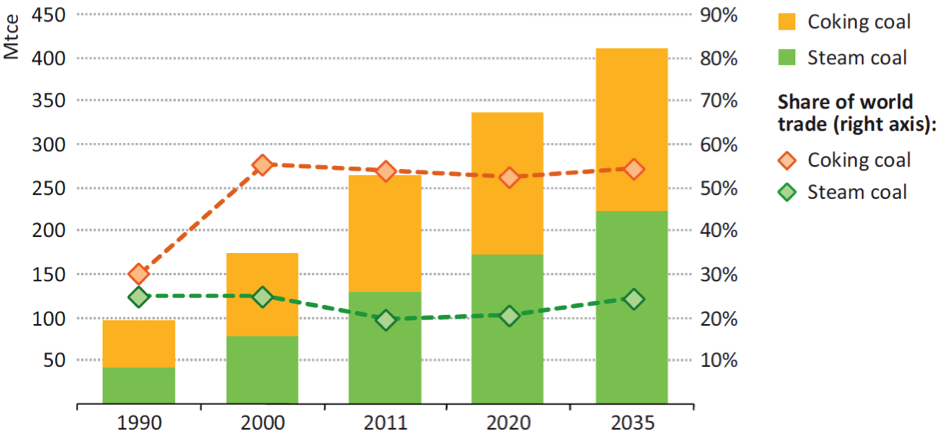Greg Evans, Executive Director – Coal, Minerals Council of Australia explains that coal-fired power generation kept lights and air conditioners on and kept businesses running in Australia during the past summer, according to the latest figures from the Australian Energy Market Operator (AEMO). AEMO has noted in its Summer 2017-18 Operations Review that “the NEM coal generation fleet recorded its fourth-highest summer availability for the past 10 years (some 250 MW more capacity was available than the long-term average for this period).”
Between 1 December and 30 April, coal-fired power generation produced more than 76% of large scale power generation in the National Electricity Market (NEM), with the next highest being gas at just under 10%.
Coal’s dominance as a reliable source of energy over summer was even clearer in NSW, where 89% of power came from coal. In Queensland it was 85% and Victoria 82%.
AEMO’s figures show that claims by The Australia Institute, the Greens and others that coal-fired generation is unreliable are wrong.
Coal is also able to compete as a future energy source in Australia.
Claims made to Senate Estimates by the Chief Executive of Snowy Hydro Paul Broad regarding the economic viability of new coal-fired high efficiency low emission (HELE) plants are not accurate.
Assertions that Snowy 2.0 will out-compete any coal plant on price and reliability are contradicted by an independent study from 2017 by Solstice Development Services and GHD engineers on generation costs which concluded a large HELE plant had the capability to deliver the lowest cost 24 hours per day electricity from A$40/MWh, or a mid-point price of A$59/MWh.
Broad stated it would cost Snowy 2.0 A$40/MWh to pump water to the upper storage, and it would sell at A$80/MWh into the grid, which is much higher than coal.
MCA estimates that based on a A$40/MWh wholesale electricity price to pump the water uphill, the indicative capital costs of the new pumping and generation plant and infrastructure and several other untested assumptions by Snowy Hydro, the wholesale electricity price required to cover costs would be closer to A$100/MWh – and closer to A$120/MWh if the substantial upgrading of transmission assets that will be required is included.
Snowy 2.0 is not a 24/7 generation option across a long period of time. At least half the time, electricity from other sources is used for pumping water to the upper reservoir. This level of availability can’t be compared to 24/7 dispatchable generation such as that provided by coal or gas. It’s also unclear what ‘cheap’ form of energy will be used for pumping if the objective is to shut down existing coal generation over time.
Claims that HELE coal is not flexible and can’t operate in a grid with renewable energy are also wrong. For example, the Neurath plant in Germany can ramp up and down by 500 MW in 15 minutes and modern coal-fired power plants can turn down to 20% of full output.
“Pumped hydro may have a role to play in firming renewable energy. But the heavy lifting of providing affordable and reliable energy can only be done by lowest cost dispatchable energy supplies available 24/7,” Evans concluded.
The graph shows Australian coal exports by type, 1990 to 2035, International Energy Agency’s core scenario (Mtce).











